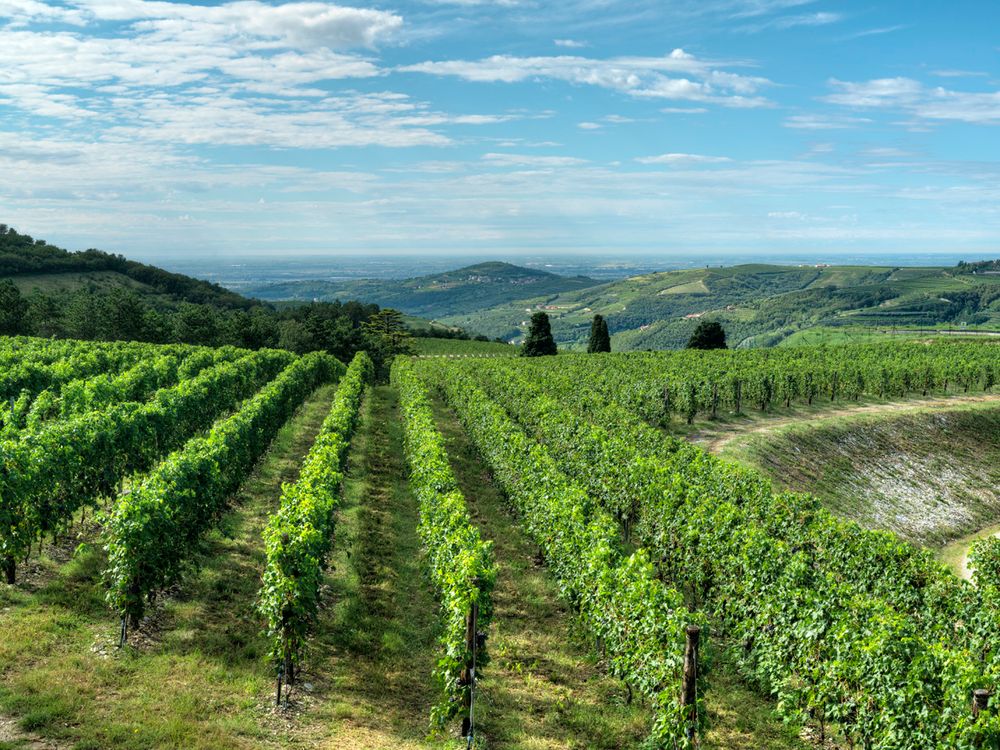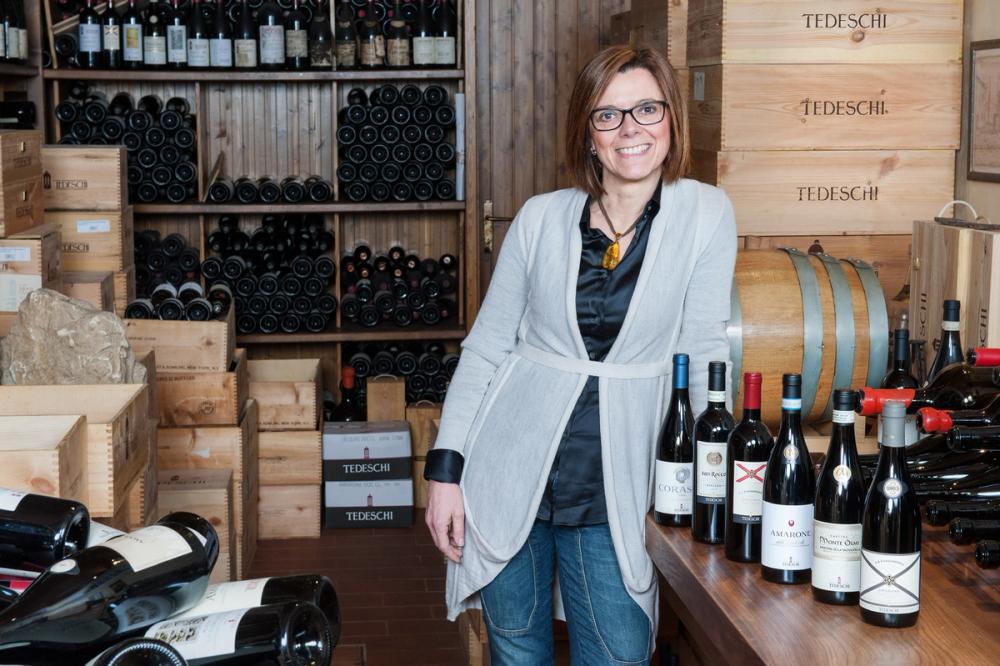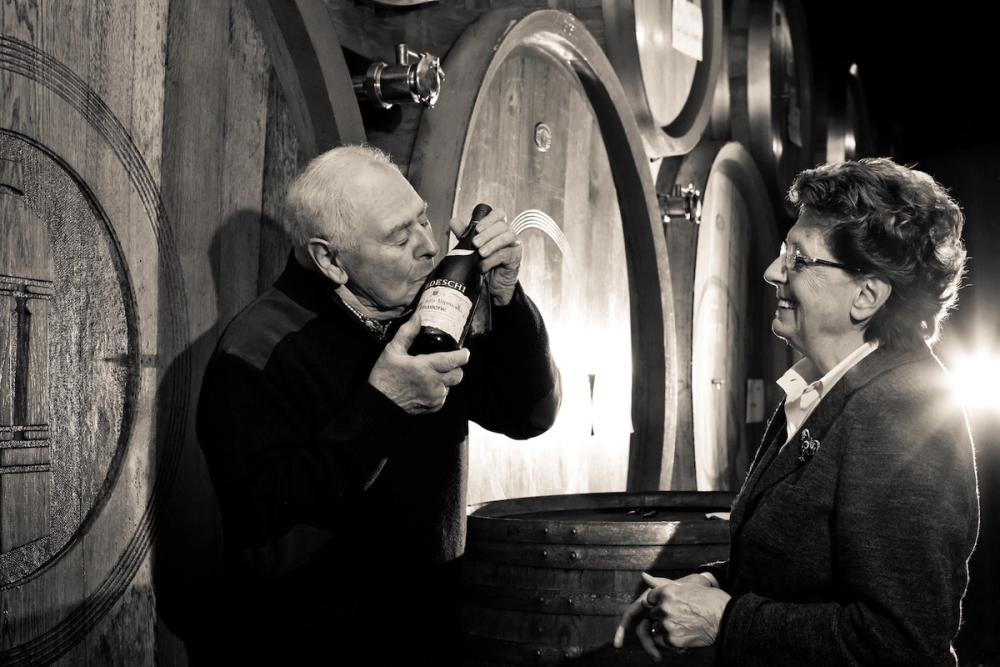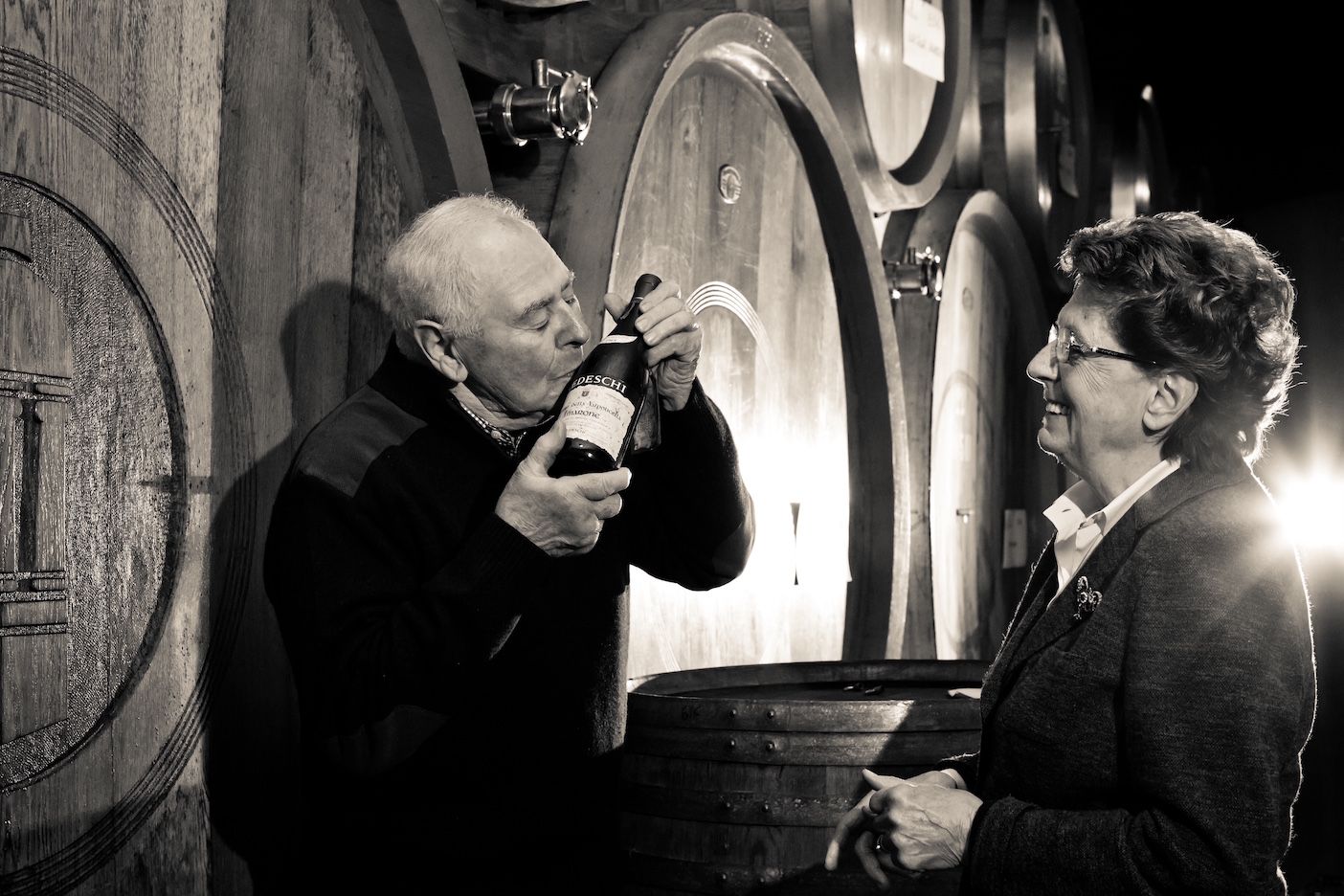“There are nuances found with varying terroir, altitude, roots and biodiversity. The roots get minerals from the soil, and with different soils you get different flavours,” says Sabrina Tedeschi.
The notion of ‘terroir’ wasn’t something commonly discussed in Valpolicella in the 1960s. At that time, the region in northeast Italy had just been granted its DOC status. The increased demand saw yields go up and quality go down, but Lorenzo Tedeschi was playing with the idea of a single-vineyard wine, one of the very first in Valpolicella. Lorenzo started to look at and understand the different parcels of his estate and he decided to vinify grapes from his Monte Olmi vineyard separately. Today Monte Olmi is the symbol of the estate and its terroir – and is no doubt a sign of quality across the Valpolicella region.
The Tedeschi estate has four centuries of vine cultivation under its belt, with its history stretching back to 1630. Throughout that time, the quest for knowledge about the land and its soils has been a continuous journey and now the estate works very closely with the University of Verona to pursue its research. This obsession to understand terroir is what makes Tedeschi one of the leading names in Valpolicella, and wine institutions throughout the world have benefitted from its research on Verona wines.

So many different expressions
Based in the historic part of Valpolicella in the west, Tedeschi owns 48 hectares of characteristically picturesque vineyards in the hills. It’s still a family-run operation, with Lorenzo at the helm. Daughters, Antonietta and Sabrina, are in charge of the day-to-day running of the business and son Riccardo is the winemaker. Producing half a million bottles each year, Tedeschi refers to itself as a boutique winery that focuses on quality, never volume.
Across several sites, from the hills down to the lake, Tedeschi makes a huge range of Valpolicella wines. “We have many different labels,” Sabrina Tedeschi tells me. “It’s quite strange to have so many appellations, but there are so many different expressions, from simple to complex. They are all characteristic wines of the region, but each appellation expresses something different.”
Tedeschi has four types of Amarone and five Valpolicellas. “We can’t plant different varieties here, but there are nuances found with varying terroir, altitude, roots and biodiversity. The roots get minerals from the soil, and with different soils you get different flavours,” says Sabrina. “Acidity depends on the clay part of soil. In the hills we have limestone, marl and clay, giving complexity, richness, elegance and structure. The sandy soils by the lake produce wines which are more simple, for the everyday occasion.”

Sabrina Tedeschi
Though the range of Tedeschi wines is extensive, Sabrina tells me that it is important to view the collection as a whole “to see the consistency of character.” There is a thread of style – authenticity and typicity weaving its way through all of the wines – showing that, whether it’s an everyday wine or a special occasion wine, it is always Tedeschi. As quality is at the forefront of everything they produce, all Tedeschi wines are in the premium to super-premium category and aren’t likely to be found on the supermarket shelves, preferring to sell through specialist wine merchants.
Oenophiles seeking out Tedeschi will be rewarded with wines of power, elegance and personality. Tedeschi’s aim is to faithfully channel the unique characteristics of their historic region and this is done by adopting the most innovative methods in the vineyards and the winery. They are a certified sustainable winery, committing to the three pillars of sustainability – environment, social and economic – and by using biodiverse techniques in the vineyards, Riccardo respects the rhythm of the land and embraces the intricacies of the growing season. The ups and downs of each season are diarised in every bottle. Farming techniques are as organic as possible, but because the grapes need to be in perfect health for the drying process, the level of organic farming depends on the weather throughout the season.
As we move from terroir to technique, we discuss the investments in the winery over the years. A modern drying loft was built in 1995 to control the environment’s humidity by regulating the ventilation, keeping the grapes in prime condition during the whole drying period. The entire vinification area has also been renovated and expanded to optimise the fermentation process during the harvest, which also includes the careful selection of grape varieties from the various plots. New Slavonian oak barrels are now in use, which have a capacity ranging from 1000 to 5000 litres, allowing for a better ageing process, which is key to producing the beautifully complex wines that Tedeschi is famous for.
Since 1630 Tedeschi has believed in the considerable potential of its wine and has forged its own path through research, education and passion for both the terroir and technique of Valpolicella wines.
So how were the wines tasting?

Bruna and Renzo Tedeschi
Tedeschi Capitel Nicalo Valpolicella DOC Superiore 2017
This rich Valpolicella Superiore is made using the traditional Veronese technique of semi-drying the grapes for one month until they lose 10% of their water content. This method concentrates the flavours in the grapes, resulting in an intense, structured wine with a fresh acidity.
This is one of the meatiest Valpolicella Superiores I’ve tried. It’s full-bodied and complex with pungent notes of blackcurrant, plum, cherry, oak and spice. Sabrina tells me that even though it’s a fresh wine, it can age up to and perhaps more than 15 years.
Tedeschi Capitel San Rocco Valpolicella Ripasso DOC Superiore 2017
“This is less of a terroir wine and more of a technique wine,” says Sabrina. “In the past there was a mistake of promoting Valpolicella as a baby Amarone – it should be a big Valpolicella.”
The Capitel San Rocco is a big Valpolicella – this is wine that cries out for food, in particular bold, flavoursome, rustic dishes. With notes of black cherry, clove, liquorice and vanilla, this is wine with strength and depth. Sabrina tells me that these wines can get up to 10 grams of sugar per litre, so a dry characteristic and good acidity is fundamental.
Tedeschi ‘Marne 180’ Amarone della Valpolicella DOCG
‘Marne’ refers to the marl soil of the vineyard and 180 represents the sunshine exposure from the southeast to the southwest.
Although Marne 180 is Tedeschi’s “entry-level” Amarone, it is far from a simple wine. At 16.5% alcohol, it needs time to breathe – Sabrina recommends opening the bottle an hour before drinking and using a balloon glass to enjoy this wine.
Born of a complex terroir, the Marle 180 is big and bold but, most importantly, balanced. It has raisined fruits on the nose, alongside vanilla, clove, tobacco, leather and liquorice, all of which come through onto the palate, within a velvet-like texture. A hint of the typical Amarone bitterness is undoubtedly present, which is stylishly expressed through flavours of coffee and cacao.
The wines of Tedeschi are imported into the UK through Fells.
































